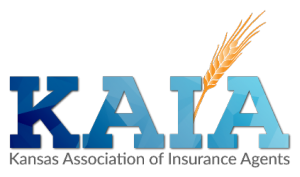Seal the Deal: Elements of a Winning Proposal
In our work with agencies across Wisconsin and the United States, we see a variety of commercial insurance proposals. These documents carry much weight in showcasing your professional acumen, cross-selling products, and mitigating E&O risks. A professional commercial insurance quote proposal should be clear, detailed, and tailored to the needs of the business you’re serving.
Let’s break down some key parts of a commercial insurance proposal:
1. Executive Summary
- A brief overview of the proposal: This can include a table of contents, a paragraph explaining what is included in the document, or a table of the types of insurance quotes included in the document.
- Highlights of coverage options and key benefits: Offering additional options is a strong E&O mitigation tool.
- Personalized content addressing the client's business risks: Even a few “customized” bullet points can show genuine understanding and acknowledgement for the client’s business.
- An overview of the agency personnel and their contact information.
2. Client Information
- Business name, address, and industry details.
- Description of operations
3. Coverage Details
Clearly outline each coverage type, including:
- General Liability
- Property Insurance
- Workers' Compensation
- Professional Liability (E&O)
- Cyber Liability
- Business Interruption
- Commercial Auto Insurance
- Directors & Officers (D&O) Insurance
4. Limits and Deductibles
- Clear presentation of coverage limits: recognize that not all business owners understand insurance options, limits or deductibles. Provide a simple overview to drive clarity.
- Explanation of deductibles.
5. Premium Breakdown
- Itemized costs for each type of coverage: Most business owners will appreciate viewing their expiring premium next to their renewal premium. Be prepared to answer questions regarding any increases in these amounts.
- Payment plan options and discounts (if applicable).
6. Policy Terms and Conditions
- Effective dates.
- Exclusions and limitations: Avoid the risk of misrepresenting any information and utilize verbiage provided by the carrier when explaining exclusions, endorsements and additional coverage options.
- Endorsements or optional coverages.
7. Risk Assessment and Recommendations
- Analysis of potential risks unique to the client's business.
- Suggested strategies or additional coverages to mitigate these risks.
8. Insurance Carrier Information
- Name, financial rating, and reputation of the insurer.
- Explanation of why the carrier is a good fit for the client.
9. Claims Process and Support
- Detailed steps for reporting claims.
- Contact information for claims contacts at the insurance company.
10. Next Steps and Contact Information
- Clear instructions for accepting the proposal.
- Point of contact for further questions or clarifications.
11. Appendices
- Glossary of insurance terms.
- Sample certificates of insurance.
- Testimonials or references.
A well-structured proposal informs the client about their insurance options and can play an essential role in strengthening the relationship. If the agency is looking for sample proposals, a review of current proposals, or sample disclaimer language, feel free to reach out to Virtual Agency Solutions by visiting virtualagencysolutions.com. You can also visit the Catalyit website and browse AI tools for proposal generation or proposal analysis.
Mallory Cornell, MBA
Vice President, Virtual Agency Solutions at the IIAW
www.virtualagencysolutions.com
